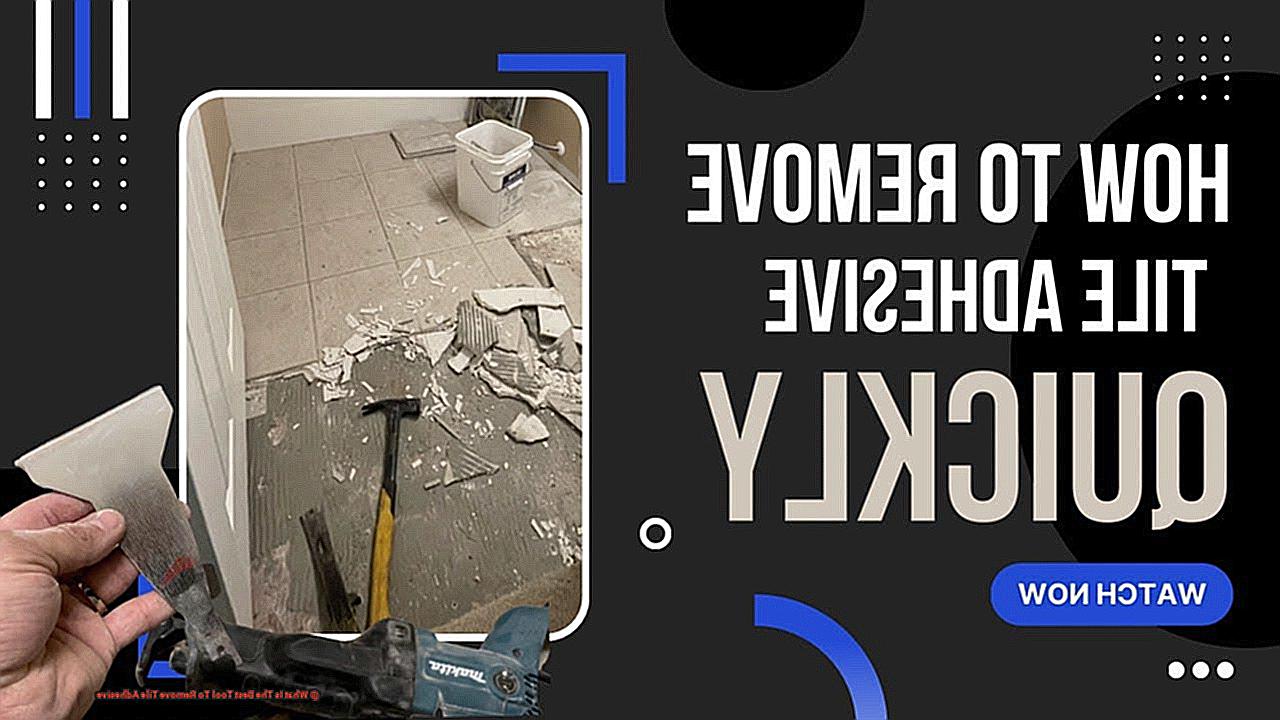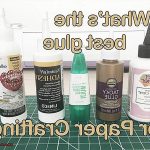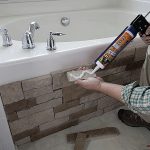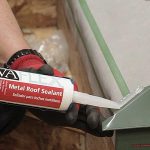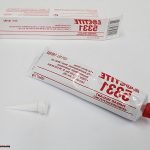Thinking of upgrading your kitchen or bathroom with new tiles? Before you can lay down the fresh ones, you’ll need to remove the old adhesive. But don’t worry, my dear reader, I’m here to help you out and reveal the ultimate tool for removing tile adhesive.
Now, let’s get one thing straight – there’s no one-size-fits-all solution when it comes to removing tile adhesive. The type of tool you need depends on the composition and thickness of the adhesive. Some adhesives dissolve easily with water, while others require more heavy-duty methods.
In this article, we’ll explore a variety of tools that are highly effective in removing tile adhesive. From heat guns to scrapers, grinders to chemicals – we’ve got it all covered. We’ll also weigh up the pros and cons of each tool and explain their best use cases. By the end of this post, you’ll be equipped with the knowledge needed to handle any tile removal project like a pro.
So, sit back, relax and join me as we delve into the world of removing tile adhesive and uncover the best tools for achieving a smooth surface for your new tiles.
What is Tile Adhesive?
Contents
Tile adhesive, commonly referred to as tile glue, is an essential bonding material used to attach tiles to a surface. This strong adhesive creates a durable bond between the tile and the surface it is being applied to, making it ideal for both indoor and outdoor tiling projects, including walls and floors.
With a variety of types of tile adhesives available in the market, it’s essential to choose the right one for your specific project needs. Cement-based adhesive is made from cement, sand, and additives, and it is suitable for bonding tiles to concrete surfaces. Epoxy adhesive is a two-part bonding material that creates a strong bond between the tiles and the surface. Organic adhesive is made from natural materials such as cellulose or starch and is commonly used for attaching tiles to wooden surfaces.
Tile adhesive can come in various forms such as powder, paste, or ready-to-use liquid form. The choice of tile adhesive will depend on the type of tile being installed and the surface it is being applied to. Selecting the right type of tile adhesive ensures a durable bond that will last for years to come.
Aside from its bonding properties, tile adhesive also provides waterproofing benefits that make it ideal for use in areas exposed to moisture such as bathrooms, kitchens, swimming pools, and other wet areas. Its waterproofing properties add an extra layer of protection against water damage.
When it comes to removing tile adhesive, using the right tool can make all the difference. Floor scrapers or chisel scrapers are excellent for removing thick or stubborn adhesive as they have sharp blades that can easily cut through the material. Oscillating multi-tools are highly effective in removing tile adhesive due to their vibrating head that can be fitted with different blades and attachments for various tasks. Heat guns or steamers are also useful tools for removing certain types of tile adhesive by softening it, making it easier to scrape away.
Different Types of Tile Adhesive
Tile adhesive is a crucial component in any tiling project. It’s the glue that holds your tiles in place, and choosing the right type of adhesive is crucial to ensure the success of your project. With so many different types of tile adhesive available on the market, it can be hard to know which one to choose. In this article, we’ll dive deeper into the five most common types of tile adhesive and their unique properties.
Cement-based adhesive
This type of adhesive is composed of cement, sand, and other additives that help improve its bonding strength. It’s ideal for bonding ceramic, porcelain, and natural stone tiles to substrates such as concrete and cement screed. One of the main benefits of cement-based adhesive is its resistance to moisture, making it perfect for use in wet areas such as bathrooms and kitchens.
Epoxy-based adhesive
Known for its exceptional bonding strength and durability, epoxy-based adhesives are typically used in commercial and industrial applications where a high-strength bond is required. They can bond a wide range of tile types to substrates such as concrete, metal, and wood. Another advantage of epoxy-based adhesives is their resistance to chemicals, making them ideal for use in industrial settings.
Acrylic-based adhesive
This type of adhesive is becoming more popular due to its ease of use. It’s a pre-mixed adhesive that doesn’t require any mixing before application. Acrylic-based adhesive provides good bonding strength and flexibility, making it suitable for use on walls and floors. It’s also easy to clean up with water, making it perfect for DIY projects.
Latex-based adhesive
Latex-based adhesives are a popular choice for DIYers because they’re easy to use and provide a strong bond. They can bond ceramic, porcelain, and natural stone tiles to substrates such as concrete, cement screed, and plywood. Like acrylic-based adhesive, latex-based adhesive is also easy to clean up with water.
Ready-mixed adhesive
For small tiling projects or for those who don’t want to mix their adhesive manually, ready-mixed adhesive is the perfect choice. It comes pre-mixed and ready to use straight out of the container. Ready-mixed adhesives can bond ceramic, porcelain, and natural stone tiles to substrates such as concrete, cement screed, and plywood. However, it may not be suitable for heavy-duty applications.
Challenges of Removing Tile Adhesive
If you’re looking to update your bathroom or kitchen, removing old tiles and the adhesive holding them in place is a crucial first step. However, this task is not without its challenges. Here are some of the common challenges you may face when removing tile adhesive, and how to overcome them.
Firstly, tile adhesive can be incredibly strong and difficult to remove, especially if it has been applied using a high-strength adhesive. The good news is that there are tools specifically designed for this task, such as a scraper or chisel. These tools allow you to chip away at the adhesive until it loosens from the surface.
Another challenge of removing tile adhesive is the mess it can leave behind. Some adhesives can be very sticky and leave behind residue that’s challenging to clean. It’s important to use the right cleaning solution and tools to remove any leftover debris without damaging the surface underneath.
Perhaps the most significant challenge of removing tile adhesive is the potential damage it can cause to the underlying surface. If the adhesive was applied too thickly or has been allowed to dry for too long, it can bond tightly with the substrate, making it difficult to remove without causing damage. This can be particularly problematic for delicate surfaces like plaster or wood. To avoid damaging the surface, consider using a heat gun or steam cleaner to soften the adhesive before attempting to remove it.
Lastly, the process of removing tile adhesive requires patience and effort. Depending on the size of the area being worked on and the tools being used, it may take several hours or even days to fully remove all traces of adhesive. It’s essential to take breaks as needed and work methodically to ensure that every bit of adhesive is removed.
Despite these challenges, there are several tools and techniques that can help you effectively remove tile adhesive. These include using a scraper or chisel, applying heat or steam, and using specialized cleaning solutions. By using these tools and techniques, you’ll be able to remove even the most stubborn adhesive without damaging the underlying surface.
Floor Scrapers and Chisel Scrapers
As an expert in floor scrapers and chisel scrapers, I’m here to guide you through the differences between these two tools and how to use them effectively for your tile adhesive removal project.
Let’s start with floor scrapers. These bad boys are perfect for those larger-scale projects, such as commercial or industrial spaces. With a long handle and wide, flat blade, they cover a lot of ground quickly. If you’re working on a big area, a floor scraper may be your best bet to save time and effort.
Chisel scrapers, on the other hand, are better suited for smaller or hard-to-reach areas such as corners or edges. With a shorter handle and narrow, pointed blade, they offer more precision and control. This makes them a popular choice for residential DIY projects where attention to detail is important.
Now that you know the differences between these two tools, let’s talk about how to use them effectively. First and foremost, make sure to wear protective gear such as gloves and eye goggles to avoid injury. Safety first, folks.
It’s also important to work in small sections and apply a liberal amount of adhesive remover solution to soften the adhesive before scraping it away. This will save you time and energy in the long run.
For floor scrapers, start at one end of the room and work your way towards the other end in straight lines. Apply pressure evenly across the blade and use long strokes for maximum efficiency. Don’t forget to take breaks and stretch your muscles if needed.
For chisel scrapers, start by using the pointed end to loosen the adhesive from corners or edges. Then switch to the flat end to scrape away the adhesive in a controlled and precise manner. You’ll feel like a pro in no time.
Oscillating Multi-Tools
This versatile and efficient tool is a favorite among professionals for its precision and control.
One of the main advantages of using an oscillating multi-tool for tile adhesive removal is its ability to switch between different attachments. With a carbide rasp attachment, you can quickly grind away at the adhesive, and a scraper blade can be used to remove any remaining residue. This flexibility allows one tool to handle multiple steps in the adhesive removal process, saving you both time and effort.
In addition to versatility, an oscillating multi-tool generates less dust and debris than other methods. Its attachments cut through the adhesive rather than chipping it away, which can create more mess. This makes it particularly useful when working in enclosed or indoor spaces where dust may be a concern.
However, it’s important to note that oscillating multi-tools can be expensive compared to other adhesive removal options. They may not be suitable for larger areas or heavy-duty jobs where more powerful equipment may be needed. It’s essential to weigh the pros and cons of using an oscillating multi-tool for your specific project before investing in one.
Heat Guns and Steamers
When it comes to removing tile adhesive, two popular tools that come to mind are heat guns and steamers. Although both tools serve the same purpose, they differ in their approach and effectiveness. Let’s take a closer look at each tool’s features and see which one is right for the job.
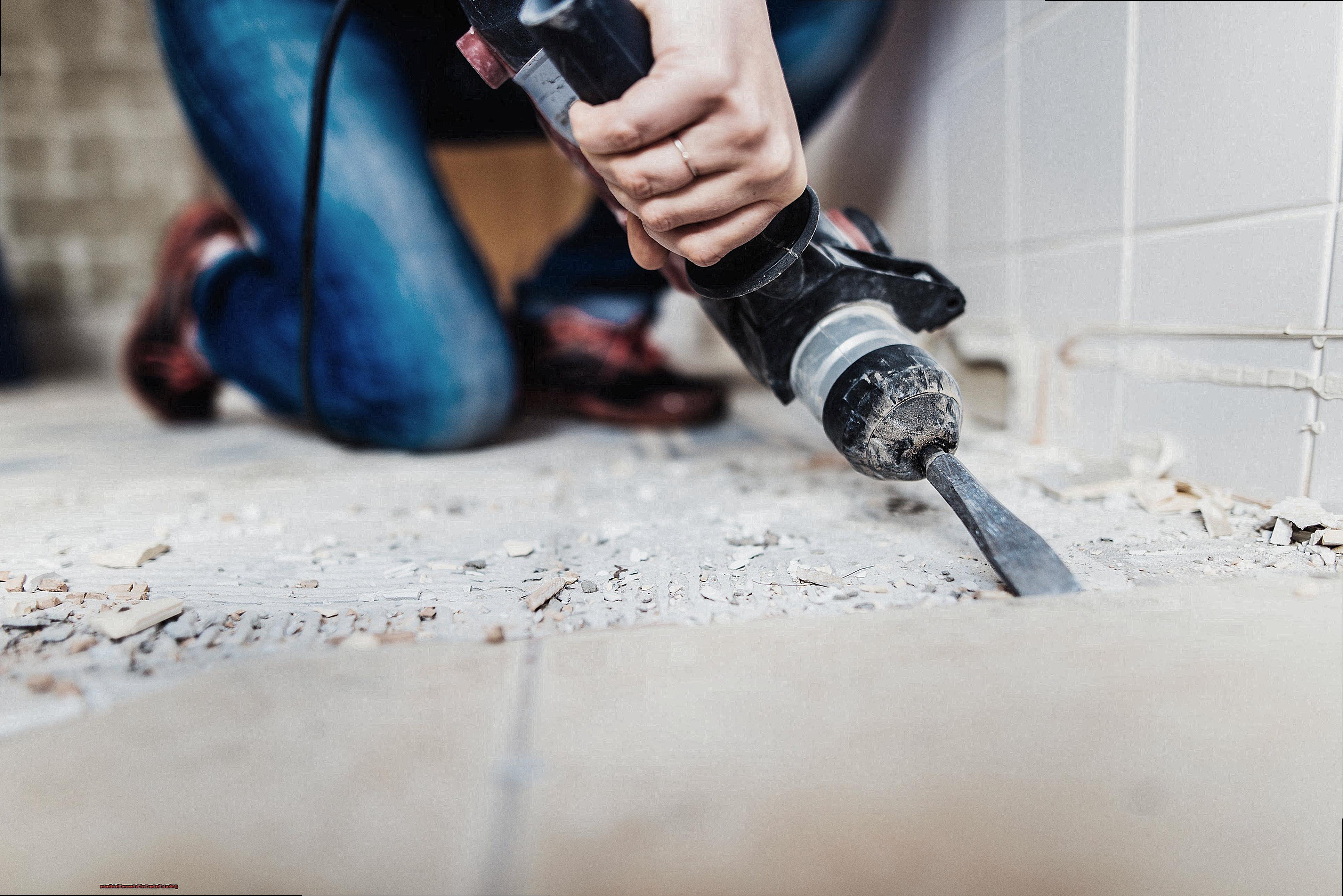
Heat guns are a powerful tool that work by heating up the adhesive, making it softer and easier to remove. However, using a heat gun requires caution since excessive heat can damage the surface or cause injury. To avoid such mishaps, it’s essential to wear protective gear like gloves and safety glasses. Additionally, working in sections keeps you from overheating one area for too long.
On the other hand, steamers are a safer option since they don’t produce open flames or excessive heat. They use hot water vapor to soften the adhesive, making it easier to scrape off. However, steamers may take longer to heat up and require more time to complete the job. Moreover, they should not be used on moisture-sensitive surfaces like drywall or certain types of wood.
So which tool should you choose? It all depends on your preferences and requirements. If you’re comfortable using a heat gun and need to complete the job quickly, it might be the better option for you. But if you’re concerned about safety or want to work on moisture-sensitive surfaces, a steamer might be a better bet.
To get the best results from your tool of choice, be sure to follow manufacturer instructions and use it safely. Here are some tips to keep in mind:
- Always wear protective gear like gloves and safety glasses when using a heat gun.
- Work in sections and avoid overheating one area for too long.
- Do not use a steamer on moisture-sensitive surfaces like drywall or certain types of wood.
- Allow enough time for the steamer to heat up before starting the job.
- Follow manufacturer instructions for best results.
Safety Precautions to Consider When Using Tools
Removing tile adhesive can be a challenging and potentially hazardous task if the right safety precautions are not taken. The right tools are essential, but so too is the protection of your health and safety.
To ensure you complete your project safely and efficiently, here are some crucial safety measures to keep in mind:
First, put on protective gear before using any tool. Gloves, safety glasses, and a dust mask are vital for keeping your hands, eyes, and lungs safe from potential hazards. Remember, safety should always be your top priority.
Next, ensure that you’re working in a well-ventilated area to avoid inhaling any harmful particles. Grinders and sanders generate a lot of dust and debris that can be hazardous to your health. Keeping the workspace clean and tidy also reduces the risk of tripping or getting tangled up in cords.
When using electric tools like grinders or sanders, take extra care. Always disconnect the power before changing attachments or blades. Using the appropriate tool for the job is also essential. Make sure to read the manufacturer’s instructions carefully before selecting the right tool for removing tile adhesive.
In summary, removing tile adhesive requires both the right tool and the right safety precautions. Here’s a quick list of what to keep in mind:
- Wear protective gear such as gloves, safety glasses, and a dust mask.
- Work in a well-ventilated area.
- Disconnect power when changing attachments.
- Use the appropriate tool for the job.
- Keep the workspace clean and tidy.
Conclusion
In summary, upgrading your kitchen or bathroom with new tiles is an exciting project, but removing tile adhesive can be a daunting task. Fear not, as this article has delved into the world of tools that can make the job a breeze. From floor scrapers to heat guns, each tool has its unique features and effectiveness depending on the type and thickness of the adhesive.
However, it’s not just about having the right tool for the job – safety precautions are paramount. Wearing protective gear such as gloves, safety glasses and a dust mask is crucial when using any tool. Additionally, working in a well-ventilated area and keeping your workspace tidy reduces the risk of accidents.
Lastly, selecting the right type of tile adhesive is critical for ensuring a durable bond between your tiles and surface. Cement-based adhesive works best on concrete surfaces while organic adhesive is ideal for wooden surfaces. Epoxy adhesive creates an unbreakable bond between tiles and substrates like metal or wood.
With these tips and techniques at your disposal, you’ll be able to tackle any tile removal project like a pro.

